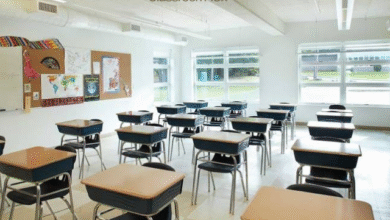Rowdy Oxford Lawsuit: Full Breakdown & Legal Implications

The Rowdy Oxford litigation has quickly emerged as a catalyst for nationwide discussion, most notably among scholars, legal commentators, student organizations, and university administrators. An episode that initially appeared confined to a single campus venue has broadened, morphing into a protracted and multifaceted litigation that threatens to redefine the contours of campus safety and the nexus of liability for off-campus establishments. As pleadings multiply and the news cycle accelerates, stakeholders at every level are demanding a set of clearer doctrines to guide future conduct.
This article offers a comprehensive examination of the Rowdy Oxford matter, tracing the incident’s genesis, unpacking the legal doctrines invoked, juxtaposing the contending parties’ claims, and evaluating the probable ripple effects for both campus safety protocols and civil liability for social establishments. Parents, undergraduates, legal scholars, and members of the press will find herein the analytical framework necessary for a reasoned interpretation of the evolving case.
Table of contents
The Incident That Sparked the Suit
Rowdy Oxford, situated a short distance from the University of Mississippi’s main quad, has long functioned as a favored nocturnal venue for students and neighborhood patrons. Its reputation for an electric environment, competitively priced libations, and a buoyant clientele has been eclipsed by a history of regulatory scrutiny: the venue has faced multiple inspections that revealed hazardous over-capacity, several incident reports linked to under-age patrons, and claims of inattentive door and floor-management practices.
The Origins of the Rowdy Oxford Lawsuit: A Deeper Look at the Venue and Its History
A comprehensive appraisal of the Rowdy Oxford litigation necessitates an inquiry into the venue itself, for it occupies the nucleus of the dispute. Rowdy Oxford, a preeminent site of nocturnal entertainment, is perched immediately adjacent to the University of Mississippi within the singularly compact collegiate municipality of Oxford. Here, the rhythm of social life is tightly interwoven with a constellation of bars, clubs, and establishments calibrated for the student populace. Its situational advantage and inherent magnetism have rendered Rowdy Oxford a permanent fixture of the student social calendar, particularly on the festive cycle of weekends and the punctuated cadence of university-sponsored occasions.
The venue’s ascendancy is predicated upon an unreserved accommodation of student habitus. Rowdy Oxford presents a calibrated mixture of pulsating music, curated thematic events, promotional pricing, and an unceremonious, energy-saturated milieu that resonates with the milieu of contemporary undergraduate adulthood. It is frequently the inaugural destination for the weekend cohort, for the rituals of birthday commemorations, and for the choreographed choreography of Greek life social programming. The spatial design and marketing stratagem prod an unbroken flow of foot traffic, catalyze animated social exchange, and ensure a cycle of habitual return, thus embedding the establishment within the calculus of commercial prosperity.
This increasing popularity has inevitably generated a distinct set of complications. A swelling crowd inevitably compounds safety hazards. Over multiple academic years, both local residents and university administrators have alerted one another to persistent issues of overcrowding, underage drinking, and insufficient security measures. The venue has been publicly reprimanded for seeming to ignore the use of counterfeit identification by minors, for continuing to serve obviously drunken patrons, and for failing to de-escalate aggressive or disorderly conduct—shortcomings rarely contained to a single bar in a college town, yet particularly grave when not corrected in concert.
Concerns about safety have also focused on the bar’s crowd-control policies. During especially busy intervals—most notably following home football games or marquee university events—fire marshals have periodically documented occupant loads exceeding legally permissible limits. Longtime patrons have recounted evenings in which the dance floor has formed a near-solid wall of bodies, leaving emergency doors hobbled by crowds and the on-duty security, though numerous, appearing either unprepared or insufficiently drilled to defuse confrontations that quickly spiral.
The purported negligence of supervisory personnel adds an additional layer of concern. Multiple web-based evaluations, together with archived incident documentation, indicate a recurring tendency toward inattentiveness or inadequate reactions to hazardous occurrences. Specifically, observers report altercations erupting with minimal or no intervention, visibly impaired patrons being permitted to depart unaccompanied without a good-faith effort to ensure their wellbeing, and, in certain instances, an absence of a structured medical response following injury.
These persistent deficiencies undergird the present civil action. Following an especially brutal altercation in the vicinity of the establishment that left several students with substantial injuries in early 2024, the venue’s historical record became the focal point of judicial inquiry. The plaintiffs allege that Rowdy Oxford’s inadequate formulation and enforcement of preventative and safety protocols contravened the applicable legal standards and was a proximate cause of the injuries. They contend that the establishment was presented with repeated opportunities to remediate unsafe conditions but manifestly neglected to discharge its duty of care.
Legal Basis of the Rowdy Oxford Lawsuit
Core Allegations
The plaintiffs’ complaint identifies a number of intertwined liabilities:
- Premises Liability: Rowdy Oxford allegedly neglected to ensure a reasonably safe environment.
- Negligent Hiring and Training: The venue purportedly conducted insufficient background checks and failed to supervise staff adequately.
- Liquor Liability (Dram Shop Laws): The complaint charges the venue with serving both minors and patrons already visibly intoxicated.
- Negligent Security: The plaintiffs contend the venue lacked adequately trained staff and formal safety protocols.
Defense Perspective
In response, Rowdy Oxford contends that:
- The incident occurred in the public right-of-way outside the venue.
- Security practices complied with all relevant state regulations.
- Patrons bear a degree of personal responsibility for their own conduct.
Legal Jurisdiction
The lawsuit was filed in Lafayette County Circuit Court and may establish a significant precedent for the liability of nightlife venues that cater to university students.
Broader Implications for Colleges and Nightlife Venues
In the wake of the allegations, the University of Mississippi has:
- Augmented the presence of campus police officers in the vicinity of nightlife districts.
- Enhanced alliance programs with neighboring bars have now mandated ID scanning and intoxication-check protocols led by our peer safety coalition. To complement these, student forums addressing responsible celebratory practices have multiplied, creating space for dialogue and peer-led modeling of safer habits.
Local nightlife operators, especially those embedded in student-frequented districts, are monitoring the evolving litigation. Potential ripple effects include:
- Higher insurers’ rates tied to claims frequency.
- Altered municipal zoning and licensing benchmarks.
- State or city-mandated training modules focused on de-escalation and responsible service.
Both parental and administrative expectations for student safety in off-campus settings are tightening. Institutions are already contemplating:
- Amendments to the student code enabling off-campus sanctions.
- Formal procedures for disciplinary outcomes derived from off-site misconduct.
- Prevention campaigns reframed as safety learning modules on substance use.
Several comparable adjudications underscore this trend:
- In Santa Clara University v. The Patio (2021), the establishment incurred partial liability when a patron’s DUI produced serious injury.
- The 2017 hazing-related death of a Louisiana State University student hinged on university liability tied to negligence in permitting alcohol use.
These outcomes indicate a growing judicial disposition to extend liability to both educational and commercial sectors.
Litigators for the plaintiffs are likely to pursue:
- Recorded depositions of bar security personnel in a staggered timeline.
- Formal acquisition of CCTV records covering the key temporal zone.
- Toxicology screens for both injured and intoxicated patrons examined in situ.
The litigation’s underlying aim is to show recurrent negligence and the reasonable foreseeability of harm arising from the bars’ compliance choices.
For the Defense
Counsel will likely concentrate on:
- Transferring liability exclusively to the individual patrons
- Emphasizing that the event occurred wholly beyond the premises
- Demonstrating strict adherence to existing regulatory standards
Each party, however, may ultimately favor a negotiated settlement to limit the duration, expense, and reputational fallout of protracted litigation.
Actionable Insights for Stakeholders
For Students:
- Familiarize yourself with the specific layout and emergency exit routes of every venue you enter.
- Use GPS-based safety applications or designated check-in systems to maintain communication with friends.
- Set a personal limit on alcohol consumption and remain vigilant, intervening decisively if a peer shows visible distress.
For Business Owners:
- Implement comprehensive background screening protocols for all security personnel.
- Institutionalize training on verbal de-escalation, situation assessment, and age verification best practices.
- Schedule quarterly audits of all applicable state and municipal alcohol statutes.
For Universities:
- Expand and promote shuttle or ride-hailing subsidies that operate late-night for students.
- Collaborate on joint safety audits, inviting local venues to align on emergency plans.
- Launch and publicize confidential hotlines that permit students to report unsafe venue conditions without fear of reprisal.
Expert Legal Commentary
“The Rowdy Oxford lawsuit transcends the particulars of one night’s chaos; it exposes a durable culture of negligence that authorities have repeatedly ignored. This litigation may become the turning point that compels dramatic, lasting reform.”
— Elena Marcus, JD, Professor of Public Liability Law, University of Tennessee
Conclusion
The Rowdy Oxford case has crystallized the divergently positioned themes of student safety, the governance of nightlife enterprises, and the accountability of academic institutions. Originating as an isolated, precinct-level confrontation near the University of Mississippi, the dispute now possesses the potential to recalibrate regulatory expectations of bars, clubs, and related enterprises situated in proximity to accredited campuses throughout the United States. Central to the litigation are enduring legal uncertainties concerning the contours of liability, the evolving definition of duty of care, and the degree to which profit-driven establishments are obliged to subordinate revenue motives to the protection of patrons.
As litigation proceeds, the Rowdy Oxford case functions as an instructive precedent for landlords and operators of student-centered venues, revealing that lapses in staffing, crowd-density management, or beverage service protocols may, as a matter of civil liability,incur grave repercussions. The dispute reinforces the imperative of anticipatory risk-management frameworks and insists upon open, systematic coordination among universities, municipal regulators, and nightlife entrepreneurs.
For undergraduate patrons and their families, the Rowdy Oxford proceeding accentuates the value of informed vigilance whenever engaging in off-campus recreation. For proprietors, the case offers a profound excursus in the disciplines of risk assessment and legal readiness. The resolution, whatever form it ultimately assumes, has already redirected public scrutiny toward the ethical thresholds governing nightlife in college towns and possesses the latent capacity to sustain momentum for regulatory and substantive reform.
FAQS
1. What sparked the Rowdy Oxford lawsuit and why is it significant?
The Rowdy Oxford lawsuit was initiated after a violent altercation near the popular nightlife venue led to serious student injuries. The case gained significance due to allegations of long-standing negligence, including overcrowding, underage drinking, and inadequate security. It now serves as a focal point in redefining liability standards for off-campus establishments that cater to student populations.
2. What are the key legal claims involved in the Rowdy Oxford litigation?
The lawsuit involves multiple claims, including premises liability, negligent hiring and supervision, liquor law violations under Dram Shop statutes, and inadequate security protocols. Plaintiffs argue that Rowdy Oxford failed to uphold its duty of care, while the defense maintains that it complied with legal standards and that the incident occurred outside its premises.
3. How might the Rowdy Oxford case affect campus safety and nightlife regulation?
The Rowdy Oxford case could reshape policies on student nightlife nationwide. Universities are already revising conduct codes, forming bar safety coalitions, and increasing police presence near nightlife zones. Simultaneously, bar owners may face stricter insurance, zoning, and compliance obligations. The case underscores the growing expectation of shared responsibility among institutions, businesses, and individuals in safeguarding student well-being.





